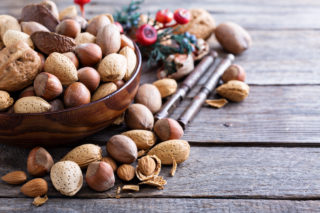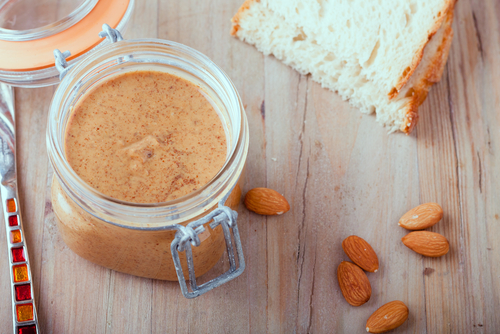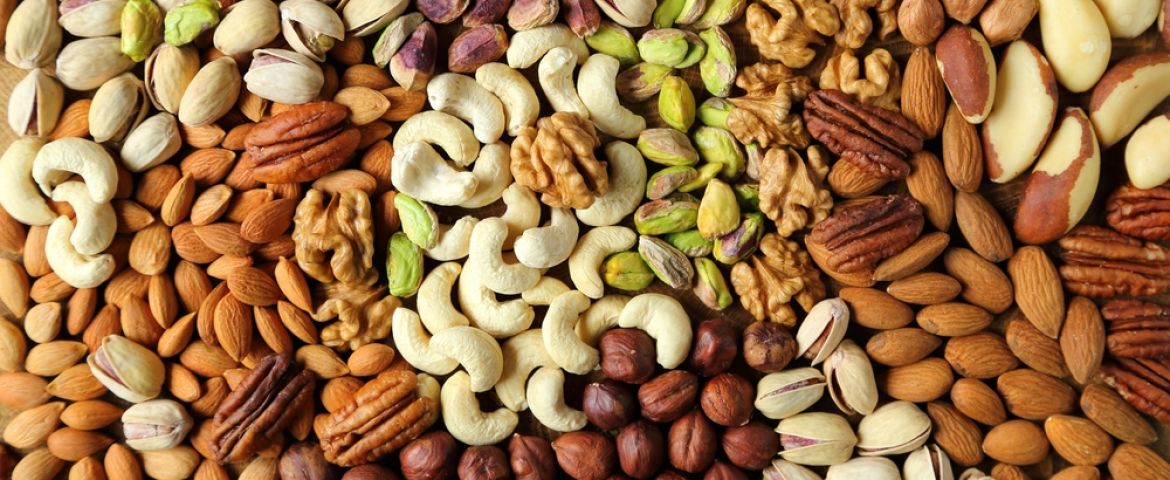By: Rebecca Mason, RDN
Nuts are awesomely versatile. They’re an easy portable snack, delicious on salads and have endless uses in a variety of cuisines. They’re also nutritional superstars, packed with protein and healthy fats. In honor of National Nut Day, nurture your nutrition knowledge with these nine nutty facts!
1. Ever wonder which nuts have the most protein per serving?
Wonder no more—almonds and pistachios are both the protein powerhouses of the nut world. Both contain 6 grams of protein per ounce. On the flip-side, the nut with the lowest protein content is the pine nut, which contains only 1 gram of protein per serving.

2. Nuts contain good fat.
Nuts have both monounsaturated and polyunsaturated fat, which can help reduce bad cholesterol and triglyceride levels. This, in turn, reduces risk of developing heart disease and Type 2 diabetes.
3. Not all nuts are created equal.
While all nuts are known to contain fat, walnuts have the greatest amount of heart-healthy alpha-linolenic acid—a plant-based omega-3 fatty acid—per serving.
4. Brazil nuts are the highest food source of selenium.
Just two Brazil nuts provide the total recommended daily intake! Consuming adequate (not excessive) amounts of selenium may help protect against prostate cancer.
5. Peanuts are technically a legume, not a nut.
What’s the difference? Legumes (like peas, beans and peanuts) have multiple seeds in a pod, but nuts have a single seed within a hard shell.
6. Fiber is something many of us need more of in our diet.
It’s recommended women consume 25 grams of fiber daily, and 35 grams for men. While all nuts contain fiber, almonds have the highest amount, offering up 3.5 grams per ounce.
7. Cashews are high in carbs.
Cashews have the highest carbohydrate content of all the nuts. A one ounce serving contains 9 grams of carbohydrate.
8. Nut butters can be a great way to consume a serving of nuts.
But you should always check the ingredient list—your best bet will be brands where nuts are the only ingredient. Be mindful of nut spreads, like chocolate-hazelnut, where the first two ingredients are sugar and palm oil. These make for a nice treat, but they won’t offer the same nutritional benefits as actual nuts.
9. Pistachios get their green color from plant-pigments.
They’re called carotenoids act as antioxidants in the body. Interestingly, pistachios also contain the antioxidants resveratrol and anthocyanin, which are responsible for their red and purple hues.
Whether you’re spreading them on toast, roasting them or just eating them straight out of the shell, nuts are a tasty and healthy addition to your diet. This National Nut Day, bust out your nutcracker and spread your newfound nut-knowledge. And now that you know these nutty nutrition facts, you can get cracking all year long.
About the Author: Rebecca Mason, RDN, is a registered dietitian/nutritionist. She is passionate about helping families and individuals improve their health through nutrition education and nutritious food access. Rebecca is certified in adult weight management, and has a background in both clinical nutrition and wellness programming.


